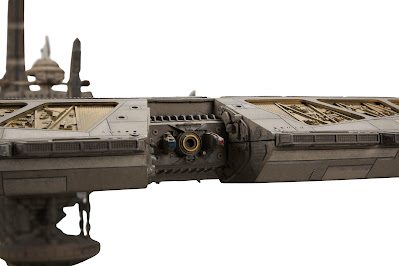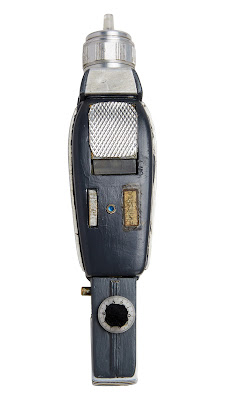It's big, it's instantly recognized and it's amazing to see it in person! It is the original filming model of the Deep Space Nine station from the eponymous show. This originally sold at the Christie's auction back in 2006 and to my knowledge it's been at MoPop in Seattle ever since. With the death of Paul Allen - the original buyer - MoPop seems to be thinning their collection.
So here it is in all it's high-res awesomeness – the one and only Deep Space Nine.
























































